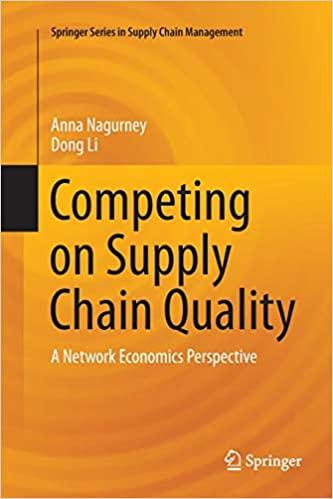Answered step by step
Verified Expert Solution
Question
1 Approved Answer
Now that the six workers have left, you have a new problem to handle. No people. Just machines. Consider four consecutive stages, A , B
Now that the six workers have left, you have a new problem to handle.
No people. Just machines.
Consider four consecutive stages, A B C and D
Each has the following capacity rates:
A: unitshr
B: unitshr
C: unitshr
D: unitshr
Assume the shortrun peak demand on the system is unitshr
Where would you add buffers to the system? Assume buffers are expensive. You don't want to add them unless they are necessary.
Choose ALL that apply. There may be more than one answer.
Group of answer choices
Before stage A
Between stage A and B
Between stage B and C
Between stage C and D
None of the above because you wouldn't need any buffers. Continue the previous question. What if you could increase the capacity of stage C to unitshour
Would you remove any buffers in the system you put in before?
Group of answer choices
Yes
No
This is a trick question because you didn't put in any buffers before
Step by Step Solution
There are 3 Steps involved in it
Step: 1

Get Instant Access to Expert-Tailored Solutions
See step-by-step solutions with expert insights and AI powered tools for academic success
Step: 2

Step: 3

Ace Your Homework with AI
Get the answers you need in no time with our AI-driven, step-by-step assistance
Get Started


